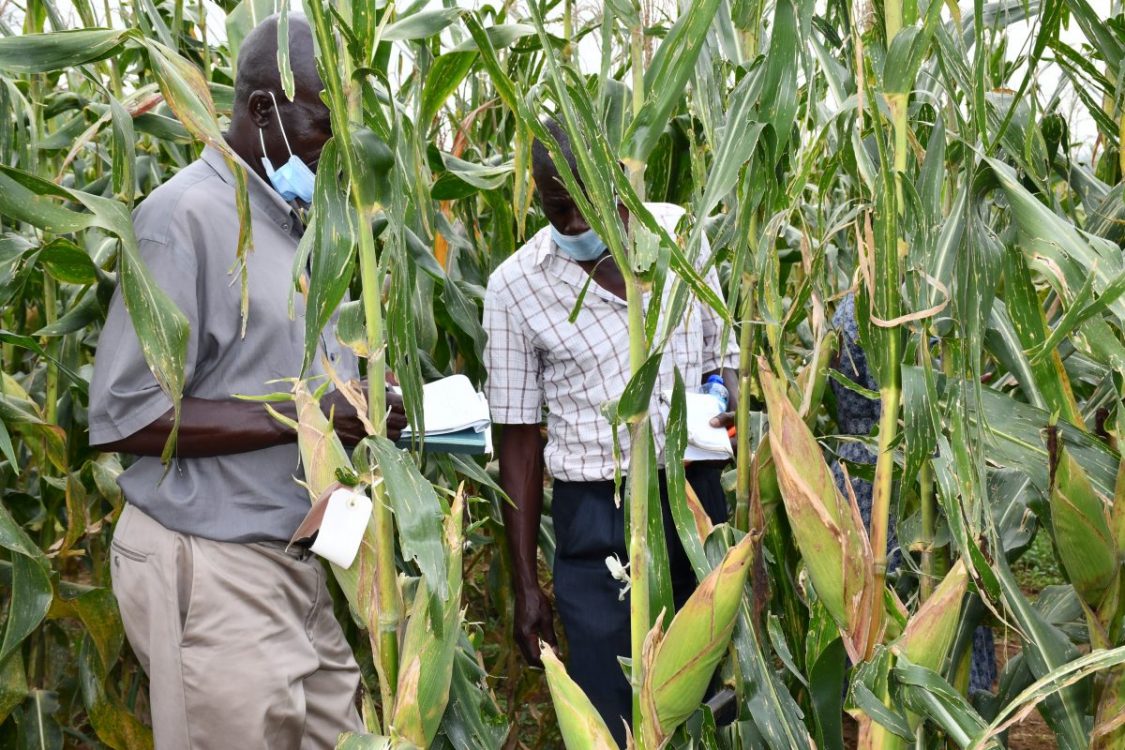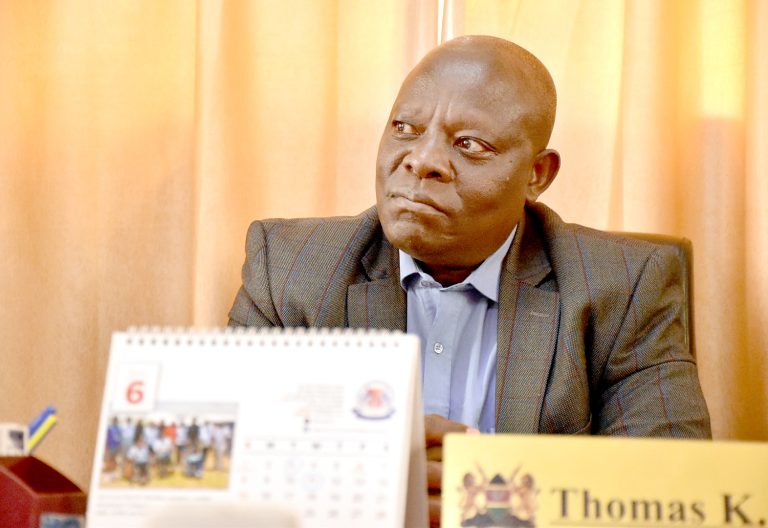Bt maize could relieve hurting farmers, consumers

Kenya’s maize farmers have for long appealed to the government and researchers to provide a lasting solution to tame pests and also assist them access quality farm inputs.
Therefore, President William Ruto’s announcement lifting the 2012 ban that restricted the importation of Genetically Modified Organisms (GMO) crops or open cultivation of GMO crops could partly answer the farmers’ prayers.
Kenya is currently grappling with an emergency food security situation haunting more than four million citizens. The lifting of the ban was prompted by the food crisis as 80 million people in the Horn of Africa stare at starvation.
The lifting of the moratorium on GMOs opens the way for remedial interventions including the introduction of genetically modified maize, known in biotechnology (agri-tech) circles as Bt maize, into smallholder fields.
Bt maize is genetically engineered to express insecticidal proteins from the bacterium Bacillus thuringiensis.
Ending the ban also allows the importation of food crops and animal feeds produced through biotechnology innovations.
According to Kenya’s 10-year Agriculture Sector Transformation and Growth Strategy (ASTGS), there are four to five million small-scale farmers in Kenya, including 3.5 million crop farmers, 600,000 pastoralists and 130,000 fisherfolk.
The Bt maize research is part of the ASTGS effort intended to build on previous strategies to transform the country’s agricultural sector by 2029. It emphasises integrating modern farming techniques into Kenya’s agricultural sector to improve productivity.
The strategy includes lifting the ban on GM crops. Kenya’s maize production continues to dwindle as demand increases, resulting in the current deficit of 15 million bags.
Spine of the economy
Agriculture is the spine of Kenya’s economy, contributing to 26 per cent of Gross Domestic Product (GDP) and another 27 per cent of GDP indirectly through linkages with other sectors. The agriculture sector employs more than 40 per cent of Kenya’s estimated population of 55 million, mostly women and youth (smallholders), and more than 70 per cent of the rural people.
Agriculture accounts for 65 per cent of export earnings and provides livelihood (employment and income) and food security for 80 per cent of the population.
The maize breeding and agronomy section of the Kenya Agricultural and Livestock Research Organisation (KALRO)’s food crops pro gramme notes that the stem (stalk) borer is the main pest affecting maize production.
The problem is felt countrywide, reducing yields considerably. With Bt technology, farmers could cut the use of pesticides, boost production and allow other beneficial insects such as bees, which are good for pollination to thrive.
KALRO Director-General Dr Eliud Kireger, referring to Bt maize national performance trials (NPTs) at Kibos in Kisumu County, says KALRO has obtained the approval of the National Biosafety Authority (NBA), Kenya Plant Health Inspectorate Services (KEPHIS) before Bt maize is formally introduced in the country.
The insect-protected GM maize he says will help farmers improve yields and reduce damage caused by the stem borer and other insect pests.
“The country is losing about 40 per cent of the 42 million bags of maize produced annually to the stem borer and other pests and we have to import to make up for the losses. The Bt maize has already been approved to work in other countries including Malawi, Nigeria and South Africa, where the technology has helped them double their maize yields,” disclosed Kireger.
The larvae of the stem borer feed on the maize tissue, retarding its growth and in some instances, killing it. Farmers have devised their own ways of controlling the stem borer, like adding mixtures of sand and ash, pepper and neem, but this has not been effective compared to chemical control. Many do not go for chemical control because of the costs involved.
The use of chemicals is an environmental pollution issue, as many farmers do not know the specifications for different regions. Others use low rates, leading to pest tolerance. The stem borer destroys 12 per cent of the nation’s maize production, while the fall armyworm causes an average maize loss of 60 per cent, according to research by the Center for Agriculture and Bioscience International (CABI).
Kireger allays any fears on the safety of Bt maize, saying all expert analysis has been tested in accordance with international standards.
Natural insecticides
Richard Hellmich of the US Department of Agriculture’s Agricultural Research Services, Corn Insects and Crop Genetics Research Unit and the Department of Entomology, Iowa State University, says Bt (Bacillus thuringiensis) is a species of bacteria that produces proteins that are toxic to certain insects.
Because of this, it has been used as a safe microbial insecticide for over 50 years to control pest caterpillars.
Bt insecticides are popular with organic farmers because they are considered “natural insecticides” and differ from most conventional insecticides because they are toxic to only a small range of related insects. James Karanja, the principal investigator of the TELA Maize Project, says the results of KALRO’s three-year trials show that Bt Maize effectively controls maize infestation and damage by the two major insect pests affecting maize production in Kenya – the spotted stem borer (Chilo partellus) and the African stem borer (Busseola fusca).
The name TELA is derived from the Latin word tutela, which means protection. The TELA Maize Project is a public-private partnership led by the African Agricultural Technology Foundation (AATF) hosted in Kenya since its founding in 2003.
Get set… ready
The partnership is working towards the commercialisation of transgenic drought-tolerant and insect-protected maize varieties to enhance food security in sub-Saharan Africa.
Launched in 2018, the TELA Maize Project is building on progress made from a decade of breeding work under the Water Efficient Maize for Africa (WEMA) Project. With the trials’ results, Kenyan farmers are closer to growing GM (Bt) maize on their farms. The Bt maize planted in Western Kenya in 2020 showed resistance to the destructive stem borer and fall armyworm pests, which will help farmers reduce their use of pesticide sprays.
“If you combine fall armyworm and stem borers, farmers almost get nothing. As scientists, we develop these technologies knowing that they will be used by our parents. There is no way we can do a shoddy job. We are here for the goodwill of the country,” Karanja says National Biosafety Authority CEO Roy Mugiira says Kenya is now ready to release GMO seeds to farmers following the lifting of the ban on GMO crops.
The adoption of the technology is well regulated and will be closely monitored. Those seeking to import GMO products into the country will be facilitated to do so as long as they fulfill the requirements of the law. Tests have already been conducted and qualified for varieties of white maize resistant to pests for cultivation. Tests for cassava and sorghum are ongoing.
In keeping with the NPTs phase of research, Bt maize was planted in six test sites representing target agroecologies for candidate Bt maize hybrids. The sites are located at KALRO centres in Alupe, Embu, Kakamega, Kandara (formerly Thika), Kibos and Mwea. NPTs are trials designed to test new plant varieties for performance, including agronomic potential and adaptability in the target region, compared to varieties currently or commonly on the market.
KEPHIS carries out NPTs in collaboration with other stakeholders. After harvest, KEPHIS prepares a report analysing data collected during the trials for review by the NPT Committee. If the varieties meet the release criteria, the committee recommends them to the National Variety Release Committee (NVRC), chaired by the Minister of Agriculture, for approval.
This allows plant breeders and seed companies to multiply and sell seeds for the new varieties. The cost of animal feed has shot up. The Association of Kenya Feeds Manufacturers is concerned about the increasing price of maize germ used to manufacture animal feeds. This has led to higher consumer costs for essential proteins such as eggs.
Farmers often debate whether to grow other crops when maize is hit by a new plant disease, pest pandemic or other limiting factors, such as maize lethal necrosis, fall armyworm, drought or aflatoxin. However, given the omnipresence of maize in multiple, diverse livelihood systems across Kenya and elsewhere in sub-Saharan Africa, national and international crop science institutions have responded with new research to improve existing maize varieties, as well as breed superior varieties with the ability to withstand persistent challenges, Karanja explains.
The Kenya government in 2020 imported two million bags of white maize for human consumption and an additional two million bags of yellow maize for animal feed. Maize imports arise mostly before local maize harvest time, a period triggering the high cost of ugali, the common staple meal made of maize flour as well as escalating high costs of animal feeds. High costs result in imports and an influx of livestock and poultry products from neighboring countries, generating competition with local producers. Other production challenges such as aflatoxins further shrink the essential commodity’s production.












